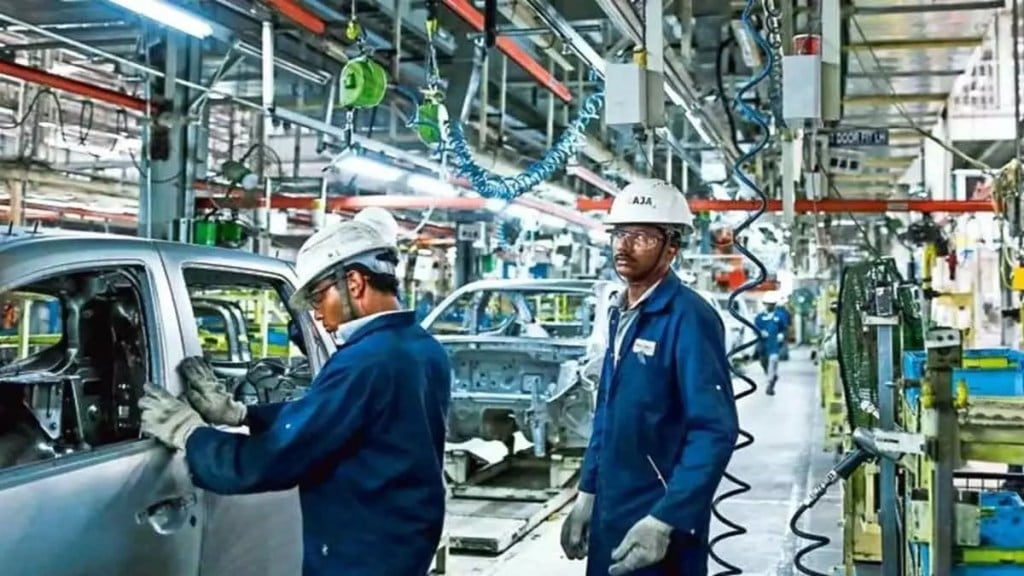By Partha Pratim Mitra
A recent study has red-flagged the unsafe practices in units manufacturing auto components. The Occupational Safety, Health and Working Conditions Code, 2020, which aims to extend benefits to informal workers, meanwhile, is yet to come into force, writes Partha Pratim Mitra
Recent concerns about workers’ safety
The Safe In India Foundation (SII), set up by bankers and management experts concerned about industrial safety, has been sounding warnings on poor factory safety norms through its annual Crushed report for several years. Its latest edition, Crushed 2025, paints a serious picture of occupational hazards lurking deep within the supply chains of India’s big auto brands.
Accident trends identified by SII
According to data compiled by SII, over 2,333 workers have had crushed finger injuries while working on machines that manufacture auto and auto components for India’s top ten automotive brands. The trend is only getting progressively worse: 875 workers lost fingers in 2024, up from 759 in 2023 and 699 in 2022. Meanwhile, other injuries have also been rising: from 167 in 2022 it went up to 381 in 2024.
Provisions in the labour laws
The major legislations which address the problem are The Factories Act, 1948; The Employees Compensation Act, 1923; The Employees State Insurance Act, 1948; The Contract Labour (Regulation and Abolition) Act, 1970 and The Industrial Disputes Act, 1948.
Redressal offered by these legislations
These legislations essentially protect the workers in different spheres of work including accidents, compensation due to injuries and casualties, define status of the worker — regular or contractual, right to raise disputes if not satisfied with the grievance redressal. The legislations also mention the duties and responsibilities of employers and contractors towards their workers while engaging them at work.
Factories Act vs OSH&WC Code
The factories act provides for the health,safety and welfare of workers in factories which are defined as premises where ten or more workers are working or were working on any day of the preceding 12 months and carrying on manufacturing process with the aid of power or with 20 or more workers without the aid of power.
The Factories Act has been subsumed in the Occupational Safety, Health and Working Conditions (OSH&WC) Code 2020. The Code attempts to consolidate the existing laws regulating the occupational safety, health and working conditions of the persons employed in an establishment which includes a factory with ten workers for purposes of registration but the Code is applicable to factories carrying on manufacturing where 20 or more workers are working in the preceding 12 months with the aid of power and 40 workers without the aid of power.
The OSH&WC Code envisages extension of benefits to all types of workers including unorganised workers, gig workers, platform workers and their family members.
Has this labour code come into force?
The OSH&WC code has not yet come into force since some state governments/ Union Territories (UT) are yet to notify the rules under the Code. As per available information, 32 States/UTs have pre-published their draft rules under the labour codes. West Bengal and Lakshadweep have not pre-published draft rules under any labour code. Delhi has pre-published draft rules only under the Code on Wages, 2019. Tamil Nadu has not pre-published its draft rules under only one Code, i.e., the Code on Social Security, 2020. The full impact of the Code will be clear only after the Rules under the Code are notified and schemes are formulated by the respective governments for the various categories of workers.
Other labour codes & laws
Four other labour laws have been subsumed in various other labour codes. The Contract Labour Act has been subsumed in the OSH&WC Code. The Employees Compensation Act and the Employees State Insurance Act have been subsumed in the Code on Social Security. The Industrial Disputes Act has been subsumed in the Industrial Relations Code, 2020.
Apprehensions of the trade unions
Trade unions are apprehensive about the increase in the threshold limits under the OSH&WC Code which could take out many industrial establishments outside its purview. These units at present are covered under the Factories Act.
The writer is a former principal labour and employment adviser to the ministry of labour and employment
Disclaimer: Views expressed are personal and do not reflect the official position or policy of FinancialExpress.com. Reproducing this content without permission is prohibited.

